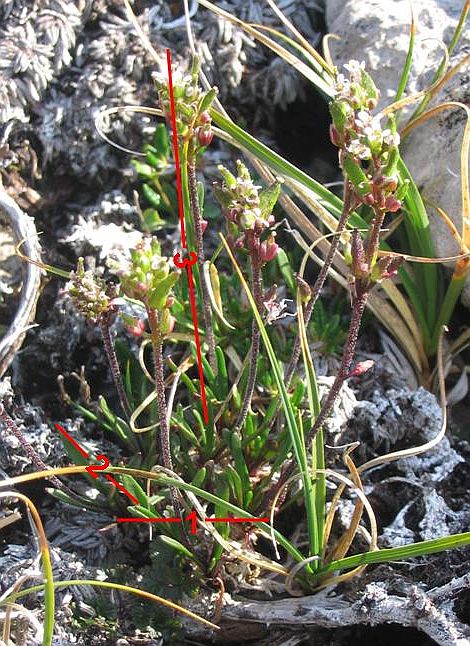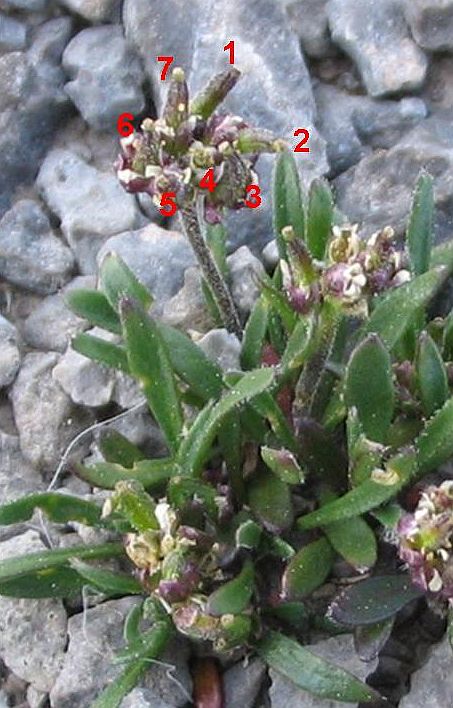Long-term monitoring studies are important for detecting significant changes and trends, and for smoothing out
the effects of short-term variability.
Long's Braya and Fernald's Braya
In 1998, a long-term monitoring study on the health and reproductive ability of Long's Braya and Fernald's Braya
was established on the northern "Limestone Barrens". Seventeen study sites were eventually set up.
Tagged Plants:
Every August, at each site, measurements of plant size and reproductive output are recorded
for 30 individually tagged plants.

Tagged Long's Braya. Note the aluminum nail anchoring the large, numbered, metal tag.
Plant size is determined by measuring
[1] basal diameter of whole plant, [2] length of longest leaf, and [3] length of longest flowering stalk.

Plant size measurements. [CLICK image
to enlarge]
The reproductive output of plants is determined by measuring the number of flowering stalks,
the numbers of flowers and fruits per stalk, and the seed set (ie. number of seeds/number of ovules, per fruit).

Reproductive output tally. [CLICK image to
enlarge]
External insect damage to leaves and fruit is also assessed and recorded.
When a plant dies, or a tag is out of the ground, or a tag is lost, a new plant is tagged
in order to keep the sample size at 30.
Permanent Monitoring Plots:
Following a complete census of all study sites in 2008, a minimum of two 1m x 2m permanent monitoring plots
were established at each study site. Additional plots were later established until 10% of the
2008 population at each site, as well as the spatial distribution of the population at each site, was well represented.
Each August, within each of the permanent study plots, the number of plants in each of the following stages
are recorded:
(1) seedling
(2) single rosette of leaves/non-flowering
(3) single rosette of leaves/flowering
(4) multiple rosette of leaves/non-flowering
(5) multiple rosette of leaves/flowering
The 2008 census totals, and the data from the permanent monitoring plots, now serve as a baseline against which
changes in population size and composition (i.e. number of plants in each stage) can be assessed.
Low Northern Rockcress
A similar series of tagged plants and permanent monitoring plots have also been established for the Low Northern
Rockcress on Table Mountain, north of Port au Port. Efforts are ongoing to establish equivalent monitoring
programs for all provincially listed species at risk.
[PAGE UNDER CONSTRUCTION]
|





















